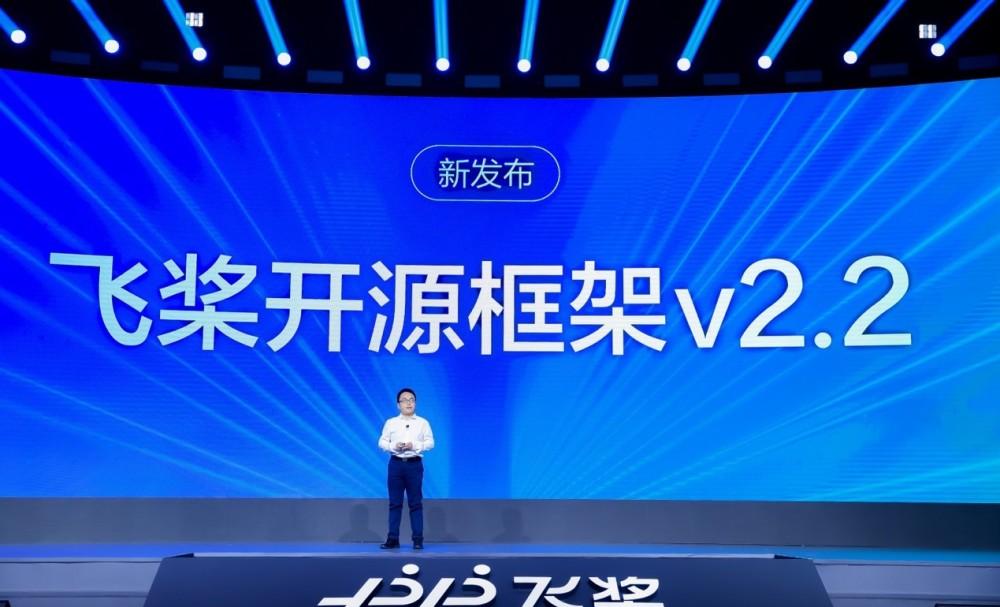
Blue Whale TMT Channel December 12, 2021, today, at the WAVE SUMMIT+2021 Deep Learning Developer Summit, Baidu released the Flying Propeller Open Source Framework v2.2. At the same time, the latest report card of Flying Propeller was announced, which has gathered 4.06 million developers, created 476,000 models, and served 157,000 enterprises and institutions.
Wang Haifeng, chief technology officer of Baidu and director of the National Engineering Laboratory for Deep Learning Technology and Application, said that Feipao adheres to the original intention of technological innovation and open source, unswervingly works the accumulation and breakthrough of core technologies, and at the same time solidly and steadily promotes ecological construction, explores and grows together with the majority of developers, industry, education and research parties, and empowers industrial transformation and upgrading.
Feipao released ten of the latest technologies and ecological progress, including the new panorama of Feipao - the new Wenxin big model of the industry-level model library, the industry's first industrial practice paradigm library, the Feipao "Great Navigation" 2.0 co-creation plan, the Flying Propeller open source framework v2.2 systematic new scientific computing API, end-to-end adaptive large-scale distributed training technology, text task full process acceleration, multi-level and low-cost hardware adaptation scheme, more than 400 industry-level open source model library models, and automatic and efficient model deployment functions for enterprise upgrades. As well as 1 minute speed installation to complete the local efficient modeling of the flying propeller EasyDL desktop version.
Technically, the API of the propeller frame v2.2 is more abundant, efficient and maintains good compatibility, and more than 100 APIs are enriched in a targeted manner, which can support a wider range of model development, especially for model applications of scientific computing, and a series of APIs such as Fourier transform, Jacobian/Hessian/VJP/JVP have been added to support quantum computing, life sciences, computational fluid dynamics, molecular dynamics and other applications. The Feipao industrial model library adds Baidu's newly released knowledge-enhancing Wenxin model; more than 400 officially supported industry-level open source algorithm models, and 13 PP series models are released, which balance accuracy and performance, and completely open up the inference deployment toolchain.
In terms of industrial landing, Feipao launched the industry's first industrial practice example library, and the Feipao Enterprise Edition, which improves development efficiency and resource use efficiency for industrial scenarios, upgrades the automatic and efficient model deployment function, and launches the EasyDL desktop version of Feipao that completes local efficient modeling at a 1-minute speed installation.
In terms of ecology, the newly released "Great Navigation" plan 2.0, on the basis of the three major channels of departure, escort and pilot, a new "co-creation" plan is added, with the flying paddle platform as the base, and community developers co-create tools, models, industrial cases and practical experience; form an industrial innovation demand docking platform to create a positive cycle of production, education and research; and work with ecological partners to build an artificial intelligence industry empowerment center to create a regional innovation ecology.
Ma Yanjun, senior director of Baidu's deep learning technology platform department, said that as China's first self-developed, feature-rich, open source and open industry-level deep learning platform, Feipao continues to accumulate and break through core technologies, and the newly released open source framework version 2.2 involves deep learning development, training, text task optimization, hardware efficient adaptation, low-threshold reasoning deployment and other innovative technologies, empowering developers and providing technology source power for industrial applications and cutting-edge exploration.